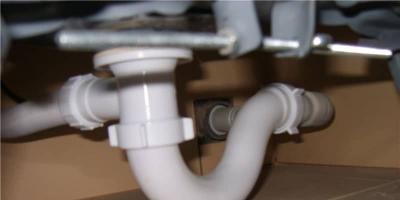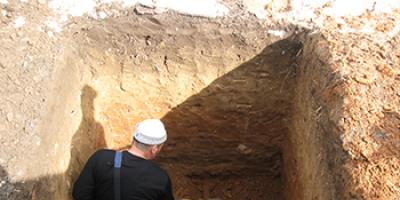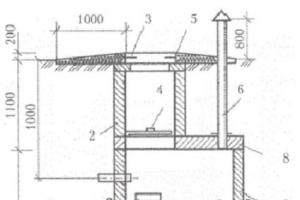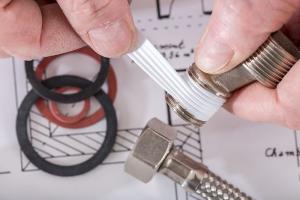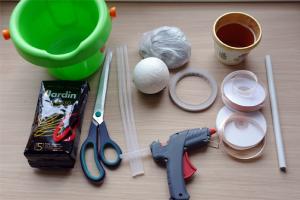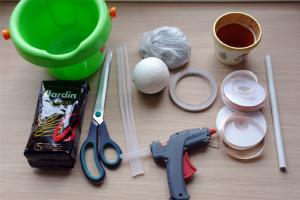A spark arrester for a chimney, at first glance it is difficult to imagine what the main purpose of this device is. In understanding ordinary person is a simple cylinder with small holes. It is able to catch sparks, preventing them from scattering across the roof covering. But, you need to understand that for some roofs, even for purposes fire safety, the possibility of installing the device is specified at the factory.
Why are spark arresters installed?
A spark arrester, as it is also called, is designed to catch burning sparks from the chimney duct. It is mandatory to install such devices in those premises and buildings that are constructed or made of fire hazardous materials. This includes not only the wood itself, but a variety of roofing materials, which may contain a certain amount of plastic and other things.
Most often it can be seen on the chimney caps; they are, as a rule, connected to the “visor” itself and represent a single “exposition”. Many people combine a device for improving traction with a device that allows them to extinguish sparks; this does not require separate outputs and the design of some incredible and bulky devices.
Like any chimney device, the presented device has its own characteristics:
- They are mounted for stoves and boilers operating on solid fuel.
- The dimensions of the “grids” themselves, which are supposed to “catch” sparks, must meet certain standards and not be more than 5 mm.
- Your house may not be accepted by the employees of the company registering it in the registry, as well as by the fire department if your roof is made of flammable materials and there is no spark arrester. Pay attention to this significant fact.
- In addition, equipping the chimney with a spark arrester is also necessary if the channel itself has a straight cross-section. In houses, as a rule, this is a rare occurrence, but baths and saunas fit exactly this concept.
- In addition, this type of device much better protects the chimney from debris, dead birds, and other things. Thanks to its small cells.
- Spark arresters require mandatory and regular cleaning.
- IN modern houses, architects already include this device in the project in advance.
Please note that when arranging your chimney duct similar device, it is not recommended to use wood as a means of heating. Firewood produces the most soot, which in a short period can completely clog the damper cells, which will subsequently lead to the formation of reverse draft, or its absence as such.
In principle, the structure itself is not so complex in configuration; it can be assembled by every homeowner who has the necessary materials and tools. But remember, not every material is suitable, so pay attention to the characteristics.
Necessary materials
The furnace flame arrester can be made from a wide variety of metals, but remember the properties, because even at the top the temperature can reach impressive values. Moreover, the metal must meet certain characteristics:
- do not rust;
- be anti-corrosion.
As a rule, you can even use a regular fence mesh. All the requirements listed above apply to it. But, take into account another significant factor: a spark arrester on a chimney pipe can only be installed with a certain cell size. Otherwise, too large holes will not bring the desired result, and small ones will even reduce traction.

Advice. The mesh is very difficult to bend, so to relieve tension from it, use a hammer, tap it, and it will become soft and pliable. Do not use rods that are too thick; the structure will become clogged with soot faster. Better find thin steel wires, they are ideal for the undertaking.
You need to take care of the tools; without them, as you know, nothing can be done. So, the minimum set:
- Hammer.
- Roulette.
- Pliers.
- Scissors.
- Screwdriver.
- Bulgarian.
- Drill.
Make the most of it if possible welding machine. But remember that not every machine is capable of welding thin metal. You need a special “automatic machine”. This will be more reliable than a regular wire bundle.
Types of spark arresters
Today you can find a spark arrestor for a chimney in a variety of configurations. They may differ in design features, form of manufacture and others. But, there are two main models of spark arrester for the chimney:
- Metal casing.

Simple metal spark arrester
As you understand, the main requirement applicable to any of the subtypes is not to interfere with normal traction. Exhaust gases, combustion products, must freely leave the channel without being delayed or encountering any obstacles. In addition, the flame arrester must extinguish absolutely all sparks, not allowing any to fly away and hit the roof.

Also take into account the specific dimensions of the devices; the main requirement in this part is compliance with the proportions of the pipe itself. That is, smaller and larger diameters will not perform the assigned functions.
The minimum cylinder diameter of the spark arrestor part should not be less than 80 mm, and the maximum should not be more than 550 mm. Of course, for the calculation it is better to use a special table; there are now many drawings and diagrams on the Internet that show the correspondence of the channel diameter to the size of the device.
Please note that for a do-it-yourself bath, you must select a diameter that is the same as that of the channel itself. These are features of the straight pipe design.
How to make a device yourself?
There is always the opportunity to buy a ready-made device, according to your dimensions and requirements, without delving into the calculations of the pipe and other things, fortunately now the choice is simply colossal and for every taste, including in the price range. But, there are more and more requests on the topic of how to make a spark arrestor for a chimney yourself, with your own hands.
The most popular DIY product is considered to be a device that forms a regular plug on a pipe with holes drilled in it. There is a small nuance here, namely, the workpiece itself must have large diameter than the output channel. This is necessary in order to secure the device to the pipe without significant problems.
But, some difficulties may await you, for example, what size to choose, how many holes to make, and the like. Incorrectly calculated indicators can easily lead to incorrect operation of the system. There is also one, but very significant, disadvantage of using just such devices. Over time, the amount of soot will increase; hardly anyone will want to climb onto the roof often. Therefore, after some time the house will feel bad smell, because of bad removal exhaust gases.
Advice. If you decide to install a spark arrestor due to the increased number of sparks, then the problem can be solved less dramatically. After all, increased cravings bring equally as much negativity as its lack. Therefore, by reducing the draft, you will certainly get rid of sparks.
The second method is a regular metal mesh. In terms of work, there is nothing complicated, the main thing is to choose the right one required material. And you can fix the spark arrester to the chimney for your bathhouse or at home using a regular clamp or a special bracket.
The disadvantages of this type of design include:
- Quick filling of “pores” with soot.
- Not highly effective.
Manufacturing process:
- First, take measurements of the basic parameters.
- Then make markings on a sheet of cardboard and cut out blanks that you will then use to work with metal.
- We cut out and prepare the necessary metal elements.
- We connect using welding, bolts or wire. The first option is more reliable.
- We attach the device to the head. Use clamps or rivets, depending on the configuration used.
If you thoroughly comply with all the norms and requirements, including those of a fire safety nature, then any spark that inadvertently flies out of the chimney is guaranteed to go out before it reaches the building next to the bathhouse. But there are two things. Firstly, no one in our country follows construction standards in principle, and secondly, the bathhouse’s own roof can be made of materials that are flammable. In general, to ensure that troubles are avoided, it is worth installing a spark arrester on the chimney. Reading the article.
Any combustion of fuel is associated with the release of thermal energy and combustion products, in which, in addition to volatile substances and gases, small particles of fuel may be present, carried away by the outgoing jet, and in which combustion processes continue to varying degrees of intensity. In principle, active sparking is caused by several reasons:
- A direct-flow chimney with a short vertical arm. Naturally, what longer length smoke ducts, the more tortuous their path, the greater the chance that all the sparks will die out, somewhere else, in the first third of the chimney duct.
- Too much thrust, which causes intense combustion and high speed of outgoing flow, which will provoke the separation of small particles of burning fuel and their release into the atmosphere.
- Use of fuel prone to increased sparking. Traditionally, well-dried firewood is considered this way. coniferous species, especially ate. Provoking spark formation is ensured by the high and massive stacking of firewood in the furnace firebox; when the lower logs burn out, the upper ones collapse with the characteristic release of a whole sheaf of sparks. Anyone who remembers the big pioneer bonfires will not let you lie.
Important! It should be remembered that, in addition to the primary sparking described above, there is a secondary one, in which soot deposits in the smoke duct ignite. They pose no less a fire threat to surrounding buildings. That is why, in fact, close attention should be paid to timeliness.
In principle, the fight against soot, the use of fuel that is not prone to sparking, and precise adjustment of the furnace draft can suppress sparking in the bud. However, it is impossible to fix a direct-flow short chimney, and then a spark arrester for the bathhouse pipe becomes a mandatory accessory.
Brief overview of the design
The spark arrester for the chimney can be made in the form of:
- Perforated damper at the end of the chimney. This type is the simplest, if not primitive, solution to the problem of spark suppression. You can quickly make a spark arrester for a bathhouse pipe with your own hands if you simply drill holes in a metal plate, which is then secured to the cut of the pipe. The spark extinguishing efficiency will be very high, since the area of the holes will be much smaller in relation to the area of the entire plate. Accordingly, the draft and quality of smoke removal as a whole will deteriorate. In the near future, the problem will worsen even more, since the flow area of the holes will be reduced due to the accumulation of carbon deposits directly on the plate, in the area of exhaust gases;
- A mesh cap that fits over the pipe. In this solution to the problem, there are practically no obstacles created to the free flow of smoke from the chimney, but the operating efficiency of such a design will be relatively low. If a sheaf of sparks is released abundantly, there is an objective probability that some part of them will freely break through the mesh barrier;
- Spark arrestor for a bath in the form of a deflector. This design works as follows. A blind plate is put on the mouth of the pipe, the plane of which is somehow curved outward. It itself rises on high legs at a level of approximately 150 - 270 mm from the chimney cut. Absolutely nothing interferes with the flow of smoke; sparks are extinguished due to the collision of flying sparks with a cold metal plate, as a result of which the spark instantly loses its temperature and changes its trajectory. Among other things, such a system protects the pipe mouth from precipitation and foreign objects entering it. At the same time, it should be noted that with strong gusts of side wind, sparks can be carried away before they come into contact with the deflector. Obviously, in a strong wind, sparks quickly lose their temperature, but, nevertheless, the theoretical possibility of ignition exists;
- The most effective is the combined spark extinguishing system and only it can rightfully be called a system. It consists of a blank deflector plate and a mesh frame around the space below it. The mesh opening diameter should be about 3.5 - 4 mm. The maximum permissible value should be considered to be 5 mm. The sparks coming out of the pipe are mostly extinguished by contact with the plate and sharply lose their dynamics; the final extinguishing occurs from contact with the mesh sidewall. It also prevents the phenomenon of spark blowing during gusts of side wind.
Attention! The material for the manufacture of a spark arresting system must meet several fundamental requirements: be non-flammable, highly resistant to adverse atmospheric conditions, and have an attractive appearance. appearance. Stainless steel meets almost all of these requirements.
Maintenance of spark arresting systems
Like anyone, the most simplest mechanism The spark arrester requires routine maintenance, which consists of the following:
- Inspection of the integrity of the entire structure. At least once a year.
- Cleaning the main components and assemblies from soot and other deposits. Twice a year.
- Unscheduled inspection and cleaning. For example, in areas with an abundance of common poplar, the fluff of this tree is able to clog the spark arrester mesh to a dense fiber state. In addition to deteriorating traction, such a nozzle is also a fire hazard. Such work must be carried out as an objective need arises and is not regulated by specific deadlines.
By the way! Work on maintenance and repair of spark arresters is classified as high-altitude, so their implementation must be ensured by strict compliance with the rules and safety requirements.
Systems made of ferrous metal under conditions of different temperature loads and condensation formation have a tendency to increased corrosion, which predetermines closer service attention to them than in relation to systems made of stainless steel.
Self-production of such a product
Making a spark arrestor for a bathhouse with your own hands is not difficult. It is enough to know the basic rules for the ratio of the diameter of the deflector to the cut diameter of the chimney. For clarity, let's present this data in the form of a table:
| Diameter of the chimney pipe at the end of the chimney, mm | Deflector diameter, mm | Height from the pipe cut to the base of the deflector, mm |
| 80 | 160 | 150 |
| 100 | 200 | 150 |
| 110 | 220 | 150 |
| 140 | 280 | 150 |
| 150 | 300 | 150 |
| 180 | 360 | 200 |
| 200 | 400 | 200 |
| 250 | 450 | 220 |
| 300 | 500 | 250 |
| 350 | 550 | 270 |
| 400 | 600 | 270 |
The following can be proposed as “quick solutions” to the problem:
- end metal pipe it is closed with a blank lid, and vertical slits are made in the side walls in increments of 10 - 12 mm. Slot width 5 mm. It is convenient to shape them with an angle grinder;
- As we said above, cover the mouth with a perforated plate;
- A cap made of fine mesh is put on the pipe, on which, for rigidity, there are rings made of steel strip;
- The smoke exhaust system is equipped with a damper and an elbow to reduce the speed and intensity of the outflow of flue gases. True, this option cannot be called quick, since it requires direct reconstruction of the smoke removal system.
You can build a complete combined system from galvanized sheet roofing or of stainless steel, thickness 0.8 mm.
A word from Experienced! However, it should be remembered that for cutting galvanized steel, like any other material that has protective covering Do not use abrasive tools. Only special cutting shears operating on the “matrix-punch” principle. Otherwise, the cut points will begin to corrode intensively. In addition, galvanized and other coatings have little resistance to thermal effects.
Stainless steel has high strength and toughness, which requires mechanical processing special methods and techniques.
As a rule, the elements of such products are fastened with rivets; welding can only be done semi-automatically using a protective gas environment. In some cases, high-temperature hard soldering is used. Both welding and soldering require equipment and solid practical skills.
Conclusion
A spark arrestor for a bath, in a number of cases, is necessary element equipping the stove system of a home bath or sauna. According to a number of SNiP requirements, namely, when using a roof made of bitumen material, as well as if the stove uses coal or coal briquettes as fuel, equipping the pipe with it is mandatory. In most cases, we find it useful to equip your bathhouse with this simple device, then you can be guaranteed to remove many of the risks of using sauna stove, in any weather and climatic conditions. Still, it’s worth playing it safe, because Moscow burned down so many times, and we’re talking about some kind of baths.
Compliance with fire safety rules is especially important. Even a small spark from the furnace can cause a fire.
It is not uncommon for sparks from the firebox to fly out of the chimney pipe, especially with good draft. Therefore, a spark arrester must be installed on it.
Types of spark arresters
There are several main types of spark arrestors:
- In the form of a deflector;
- In the form of a metal casing made of mesh.
Hot gas with sparks passes through the chimney and encounters an obstacle in the form of a metal cap or mesh. Upon contact with them, sparks cool quickly and do not pose a danger to the tree.
Many stove makers prefer to use spark arresters like the Tsaga deflector, since they are more practical than mesh ones. If you use a large mesh, sparks can break through it, and if it is very fine, it will quickly become clogged with soot.
There are also other types of deflectors, for example, the Grigorovich deflector shown in the photo is well suited for chimneys.

Why are spark arresters installed?
Spark arrestors are not necessary in most cases, and it is not practical to buy expensive off-the-shelf options, but they can provide you with some benefits.
- According to fire safety requirements PPB-01-93, the use of spark arrestors is mandatory near flammable materials.
- They are also installed in cases of easily flammable roofing (Ondulin, Tegola, scaly), when foliage accumulates on the roof, or if the house is located close to trees, in the forest.
- In addition to its main purpose, its use will prevent moisture, leaves, and birds from getting inside.
- By reducing resistance, you will eliminate reverse draft and increase chimney draft.
Making your own spark arrestor
You can make a spark arrestor for a bathhouse with your own hands from stainless steel or aluminum-zinc. To do this, you need to measure and make a template according to your chosen drawing.
Note! AISI 304 stainless steel 0.5 mm thick is best suited for this. Products made from it will last twice as long as those made from ferritic steel AISI-409(430): 10-12 years. For solid fuel boilers, chimneys cannot be made of galvanized steel.
This instruction shows an example of making a Tsaga deflector according to the drawing, only with the addition of an apron for sparks.
The structure will consist of a main chimney pipe nozzle, protective casing(shells), apron and hood cover.
- Central inner part can be made from a finished stainless pipe; it will fit like a chimney cap.
- The upper part of the pipe is rolled out into a cone of increased diameter. It should end approximately in the middle of the top casing.
- The casing that will be placed on the pipe is cut out by hand and fastened with metal plates and rivets.
- It is recommended to make an apron under the casing with a distance of approximately 6 cm from the bottom of the casing, into which sparks will fall.

- The apron should be wider than the casing, and fixed in the form of a funnel at an angle spot welding. Before attaching it to the pipe, a small recess is made - a lip for a tight connection. Later this connection is treated with sealant.
Note! Additionally, drain holes must be provided in the apron to remove moisture and stiffeners should be rolled.
- The top of the casing is closed with a round nozzle, the diameter is several cm smaller than the pipe. All fastenings are made with stainless rivets.
- To calculate sizes top cover and the height of the deflector, you can use the data from the table.

- To reliably rivet 2 parts, drill them through at the overlap point with a metal drill. Then insert the rivet into the hole, grab its head with the rivet gun and smoothly squeeze its handles.
- For additional structural strength, rolled stiffening ribs are made.
The deflector diagram is clearly shown in the photo:

Required Tools
To assemble the chimney cap yourself, you will need:
- Metal scissors;
- Hammer;
- Drill and drill bit for metal;
- Welding machine;
- Riveter and stainless steel rivets;
- Sheet bending machine.
Alternative methods of protection against sparks
In addition to installing a cap, there are other ways to protect against sparks:
- The first method is the simplest. The end of the chimney is welded tightly, and then many holes are drilled from the top ends. This can be done even by installing a prepared pipe on an existing one.
- The next method is to weld a metal mesh to the end of the chimney. This option has a significant disadvantage: the mesh quickly becomes clogged and will need to be changed soon to maintain good traction.
- If there are strong winds in your area, then install a good deflector on the head of the pipe; it will prevent the formation of reverse draft.
- Another way is to reduce cravings. This is not the most a good option, but this way you can increase the temperature of the pipe and the number of sparks emitted. For this purpose, additional elbows are created on the chimney.
Another homemade solution you can see in this video lesson:
To prevent sparks from flying directly upward due to high draft, a jumper is made on the chimney pipe, which moves part of the pipe to the side. That is, an artificial bend of the pipe is created with a well for sparks in the middle (see photo below). A small hatch is made in the well for cleaning.

Conclusion
If you don’t want to spend money on buying ready-made sauna deflectors, then you can make it yourself in one evening. Price ready-made options starts from 1 thousand rubles, depending on the diameter ().
For more information on this topic, we recommend watching the video in this article:
The chimney must be installed in any room in which there is a stove, fireplace or heating boiler operating on liquid or solid fuel. This design of exhaust mechanisms is necessary to ensure that all smoke and accompanying combustion products do not escape into the room, which is life-threatening, but into the street.

A spark arrester for a chimney allows you to make the hood in your home as safe as possible in operation, protects your home from sparks entering it, and this design will fully comply with all fire safety standards and requirements.
You need to buy a spark arrester for a chimney regardless of whether your house is wooden or brick, and the structure itself is made of high-quality metal, which is presented in the form of an attachment supplemented with a mesh with small cells and an umbrella that does not allow wind, debris and precipitation to get inside the chimney.
Basic components and preparation of tools
The spark arrester can have different dimensions, diameter, material of manufacture, color, but what remains unchanged is the principle of operation of such auxiliary protective equipment.
The simplest spark arrester for a pipe consists only of a standard fine-mesh mesh; the cost of such a design is quite low, however, the functionality is several times lower than that of an attachment supplemented with an umbrella. The first version of a spark arrestor with only a mesh can also be made quite quickly and easily with your own hands.
The deflector can have a certain shape, the choice of which depends not only on your individual wishes and preferences, but also on the diameter, cross-section, shape and other features of your hood.
The chimney deflector consists of the following structural elements:
- The housing or the so-called glass, which is fixed to the chimney pipe;
- A mesh cylinder, which is an indispensable and main part of this device;
- Deflector umbrella.



The spark arrester for a chimney for a bathhouse has the following principle of operation: smoke masses pass through a number of special channels with which it is equipped exhaust design, after which the flows collide with an obstacle in the form of an umbrella, as a result of which the direction of the smoke flows changes. Now they pass through a metal mesh and if sparks begin to form, they simply break or are extinguished by this mesh and become microscopic.
It is especially necessary to buy a chimney deflector complete with a spark arrestor if your fireplace, stove or heating boiler has a very large and strong draft that can lead to the formation of many sparks.
Also, the advantages of a spark arrester include the fact that with its help, debris and precipitation will not get into the chimney pipe, wind will not blow, birds will not penetrate, which will not allow them to settle down there and build a nest.
Of course, a spark arrester, due to its simple design and structure, can not only be bought in a specialized store in Moscow or in the city where you live, but also made using a number of materials, tools and auxiliary fittings with your own hands.




Now let’s take a closer look at the classic example of assembling a spark arrester for a chimney with a circular cross-section. In this case, we will need to acquire:
- Metal file or grinder;
- Metal scissors and hammer;
- Welding or rivets;
- Clamps.
Assembly process and rules
First of all, before assembling a spark arrester with your own hands, you need to select the correct and suitable mesh, the cells of which will have the correct dimensions. They should not be very small; ideally, a mesh with cells measuring 3-6 millimeters in size is suitable, through which all smoke masses can pass without difficulty or accumulation.
An important point in using both a purchased and homemade spark arrester is that in the process of regularly using the fireplace and lighting it solid fuel, in the process, combustion products such as soot and soot are formed, which gradually clog the mesh cells. In order to avoid back draft and smoke in the room, it is necessary to periodically clean the mesh at least once every 2 months during daily use of the heating unit.



If you decide to assemble and design a spark arrester with your own hands, at the first stage of such work it is important to prepare a sketch, with all measurements and design features, its shape, height, width, depth, cross-section, shape. Also, having a drawing will allow you to correctly calculate the amount of materials needed with maximum accuracy.
If you do not have enough confidence that you can handle the assembly the first time and you do not have the proper experience, you can first assemble a cardboard model of actual dimensions with your own hands and only after that begin assembling the original spark arrester, using cardboard blanks to measure real.
To assemble the spark arrester, you must purchase and prepare it in advance suitable materials on a heat-resistant base, which includes stainless steel or galvanized steel, while the thickness of the sheets will be at least 0.5-1.1 millimeters, and the dimensions of the sheet depend on the individual dimensions of the structure. You will also need to buy and prepare a mesh with small cells made of galvanized or stainless steel, ranging in size from 3 to 6 millimeters.
First of all, we take the mesh and cut off from it an element of the necessary parameters, which will be presented in the form of a rectangle, its longest side should be equal to the length of such a parameter as the circumference of the cylinder from the mesh. One of the sidewalls is complemented special valve, which is securely fixed on it, while this element should have a width of 1.5-2 centimeters. Such an element is intended for equipment of rivet connections, while the height of the element cylindrical will be about 100 millimeters, with 2-3 rivets.




Now we begin to form a cylinder-shaped figure from the mesh. In order for such an element to be perfectly proportional and even, you can use a pipe with a suitable radius as auxiliary equipment.
In order for the metal mesh to be more manageable and bendable, it is first tapped with a hammer, as a result of which it better forms the required shape and does not bend.
Now we proceed to cutting out the “glass” that will become the base for our mesh cylinder; it must have a suitable shape and size so that the cylinder can easily fit into it.
Now let's start assembling the deflector umbrella, for this we will need to first assemble a frame or base made in the shape of a fungus or an umbrella, which will protect the chimney from precipitation and debris getting into it and will not allow sparks to form. To create it, we will need to cut out a circle figure and also a corner segment from a sheet of steel; if you have a layout, your task will be significantly simplified, otherwise you will need to do everything necessary calculations and markings.
Such an umbrella is complemented by a special mounting valve, and in order for your cone to be perfectly smooth and symmetrical at the exit, you can roll it yourself; for this you will need a pre-prepared pipe with a small diameter, which will be fixed in a horizontal position.




Now we move on to assembling the auxiliary racks, through which you can reliably fix and assemble all the structural elements you previously made with your own hands together. They can be based on either metal rods or sheet steel at your discretion, and the width of each rack will be approximately 1.5-2 centimeters. To increase service life and increase strength, such racks are made in 2-3 layers, which is taken into account at the moment when the workpiece is developed.
The length of the racks will be individual for each specific case, but what should not be forgotten is that rivets will be placed on each side of the fastener, space for which must be left during the installation process. In order to strengthen the design of the spark arrester, the stands can be installed and secured at a slight angle, tilt, in the direction from the glass to the umbrella.
On last stage It is necessary to completely assemble the entire spark arrester, the following instructions will help you with this:
- The pipe and the “glass” are connected by means of racks that will have vertical arrangement, at this stage it is necessary to prepare several rivets;
- Cylindrical mesh element on at this stage it must be inserted between two posts and at the same time it must fit perfectly in the prepared “glass” and rest against the heads of each of the rivets;
- The height of the mesh cylinder is selected so that when entering the glass, it rests against the umbrella; now it is necessary to attach a metal mesh to the vertically located racks, which will make the structure more reliable and durable. To secure each of the racks, 1-2 rivets are used;
- We install the “umbrella”; to do this, we bend the racks, or rather their mounting zones, so that they fit inside the cone-shaped area with sufficient density. Now we drill several holes through, install rivet elements in them and make the final fixation.
Now such a spark arrester can be attached to the chimney itself and be one hundred percent sure that dirt, debris, wind, snow, rain will not get into your chimney, and all sparks will disintegrate in a timely manner.





How Alternative option– you can replace classic rivets with welding, in this case you will need to clean each joint with a grinder and if the roof does not have a fire-resistant coating, metal plates are fixed around the chimney, against which microscopic sparks that can penetrate through the mesh will be extinguished.
A spark arrestor for a chimney is not only reliable protection, which will prevent the entry of debris, wind and precipitation, but also, if desired, it is a decorative component that can be decorated with various forging elements, drawings, three-dimensional patterns and made in the same style as a weather vane, drain, chimney, fence.
In the video below, a specialist talks in detail about what features the deflector has and why a spark arrester is needed for the chimney of a stove, fireplace and bathhouse:
5 minutes to read.
Fireplaces, stoves and stoves installed in houses and baths operate on solid fuel. These devices have simple design, but pose a danger. They have an open fire location, and there is a possibility of it spreading. To avoid this, install a spark arrester on the chimney. This main element in the smoke exhaust system.
Purpose of the spark arrester
A spark arrester for a bathhouse or other structure is designed to cool hot particles located in the chimney. Moving along a smooth pipe, they do not cool down. And if they are not cooled, the particles will land on trees or the house and ignite. Therefore, a spark arrestor is mounted on the rim of the chimney. The design of the chimney is designed so that the cooling of sparks occurs in stages:
- Special obstacles in the form of horizontal outlets and turbulent flows help particles come into contact with the surface of the pipe, transferring their heat to it.
- In this regard, the pipe quickly heats up and the particles stop cooling.
- The draft inside the chimney becomes weaker due to turbulent flow.
- The installed spark arrester contains particles and cools them. At the same time, high-quality draft is maintained in the chimney.
You need to know that high quality fuel emits fewer non-combustible particles, while poor quality fuel emits more.
Varieties
There are many types of spark arresters for a sauna chimney. Of these, 2 types are very popular: deflectors and casings.
- Casing. The device has a simple design and can be made independently, using improvised materials. To install the device, make a hole in the pipe or install a nozzle in the form of a mesh. Since combustion products quickly clog the perforations and mesh, the draft level deteriorates. Therefore, such a model requires constant inspection, which is its only drawback. You can purchase a ready-made model in the store. It is assembled, just connect it to the chimney.
- Deflector. This modern model a spark arrester, which not only extinguishes hot sparks, but also changes the direction of the wind in the pipe, thereby increasing draft. This effect occurs due to a bottleneck that is located in any part of the device. The spark arrester has a beautiful appearance, but its design resembles a casing. Models are equipped with meshes and perforations.
Principle of operation
The principle of operation of the spark arrester is simple. It is based on the basics of physics. The diameter of the device must be larger than the chimney. The design and principle of operation of a spark arrester on a chimney pipe:
- The spark arrester is put on the pipe with its lower part, like a cap, and it becomes its continuation.
- The middle part of the device is made in the form of a tubular mesh. This design keeps hot particles inside and allows smoke to escape easily. The upper part of the pipe is equipped with a plug in the form of a ring or umbrella, which protects the pipe from rain.
- That part of the hot particles that did not cool against the pipe wall will reach the end of the chimney and go straight into the spark arrester.
- Once sparks enter the device, they will begin to contact inner surface device, plug and cool, and smoke will leak through the mesh.
Since the spark arrester is installed outside the structure, it will always be in a cool state.
Making a spark arrester with your own hands
It is not difficult to make a spark arrestor for a bathhouse pipe with your own hands. This will require several hours and the following tools and materials:
- steel, which has anti-corrosion properties;
- thin metal rods (for mesh);
- welding machine;
- drill, grinder;
- hammer, pliers, clamps, screwdriver;
- scissors (for metal) and a ruler.
Before making a spark arrestor for a pipe in a bathhouse, you need to select a model, take all measurements and prepare a diagram.
- The device is manufactured according to sketches. To do this, measure inner size chimney pipe and draw the details of the spark arrestor on cardboard. For an allowance, add 2 cm to each side of the part.
- Then the designs are cut out with scissors and a cardboard prototype is assembled. If necessary, the design is adjusted.
- Then the finished layouts are applied to metal sheets and using metal scissors, cut out parts from them.
- The pipe is made from a stainless steel sheet or bought in a store.
- The mesh is made with your own hands from steel rods with a diameter of up to 6 mm or purchased ready-made in the store, with suitable cells. It must be heat-resistant and wear-resistant. So how to bend steel material hard, you need to hit the mesh with a hammer. The tension in the metal material will disappear and it will begin to bend easily. You need to know that a mesh with too large holes will allow sparks to pass through, and if they are small, then the gas and smoke output will be of poor quality.
- To assemble the structure, all parts are joined and secured with rivets or welding. If welding is used, then allowances in the parts are made up to 1 cm. All joints are carefully processed with a grinder.
- Metal rivets are used to connect the remaining elements.
Metal is used to make the deflector. It is cut to the required size and bent at an angle. The bends are secured with rivets. The visor is installed on the device and secured. The device for extinguishing sparks is ready, you can start installing it.
Installation procedure
To install the spark arrester on the chimney, you need to climb onto the roof. It is better to do this work together. During installation, be sure to use personal protective equipment, otherwise you may inhale smoke. What you need to know when installing:
- The mesh of the device quickly becomes contaminated with soot and needs regular cleaning. Therefore, the features of installation and operation are closely related.
- For safety reasons, the structure must be removable and cannot be welded to the pipe. The device is inserted inside the chimney and secured with a clamp of a suitable size. If you need to clean it, it can be easily removed. This is the easiest installation method, but not reliable.
- If the device is fixed with stainless rivets, then holes are first made on it and on the pipe. The distance between the rivets is made uniform.
- In order to install a spark arrestor for a chimney correctly, the cross-section of the device and the pipe must match each other.
If the fuel used contains a large number of resins, the metal mesh will have to be cleaned frequently. In addition, the mesh quickly deteriorates if it is made of low-quality material. To avoid having to climb onto the roof every time to replace it, the product must be made of wear-resistant, high-quality material

